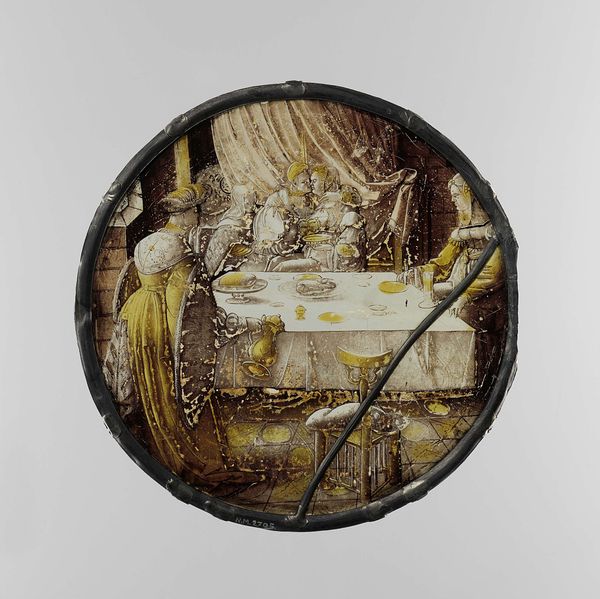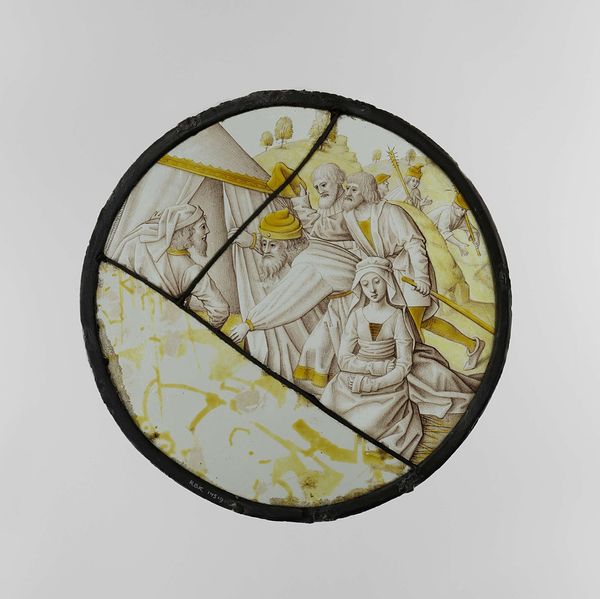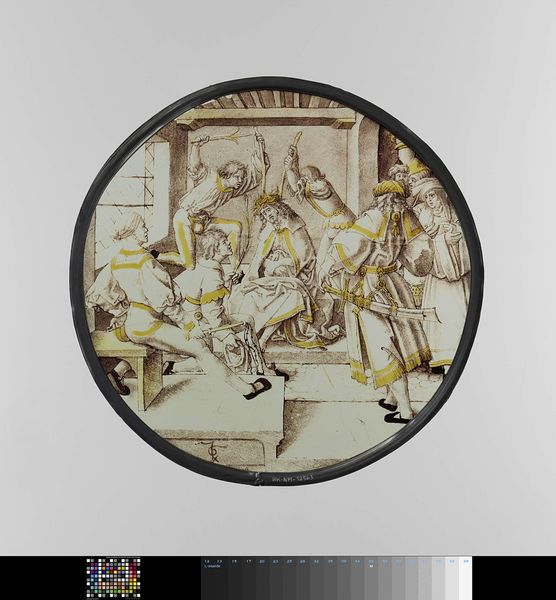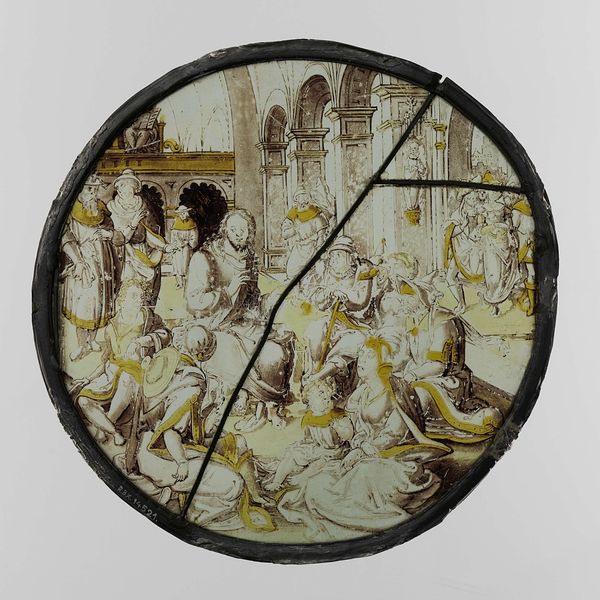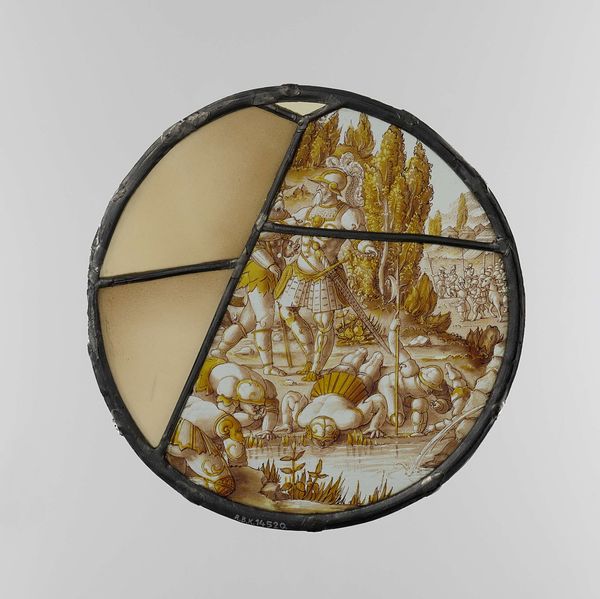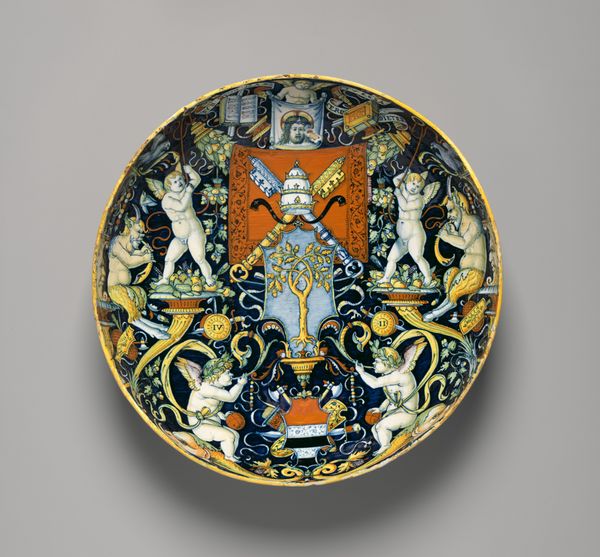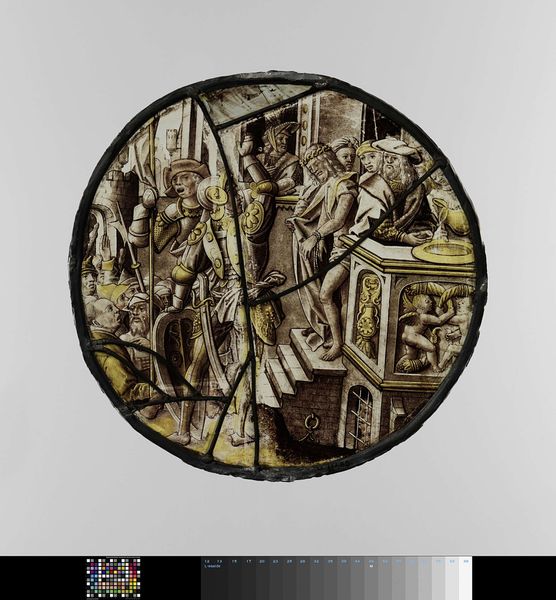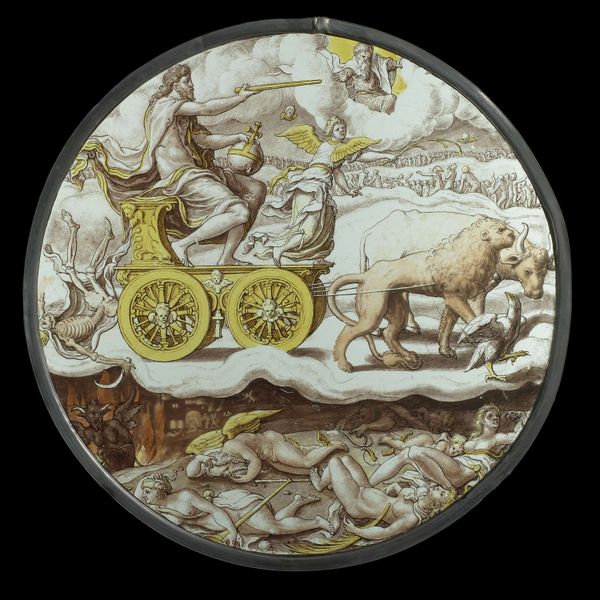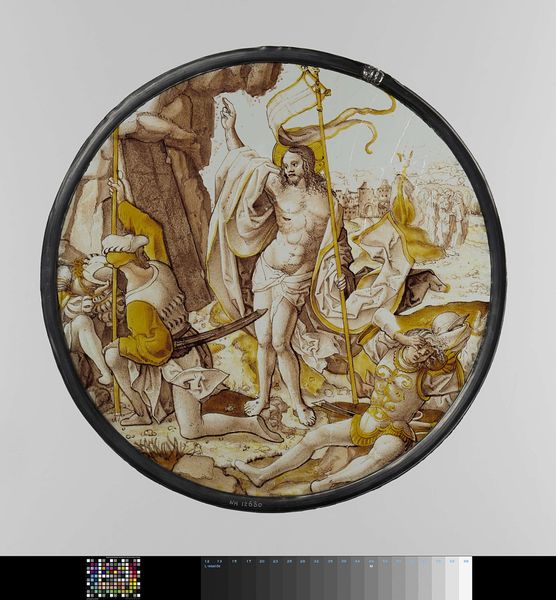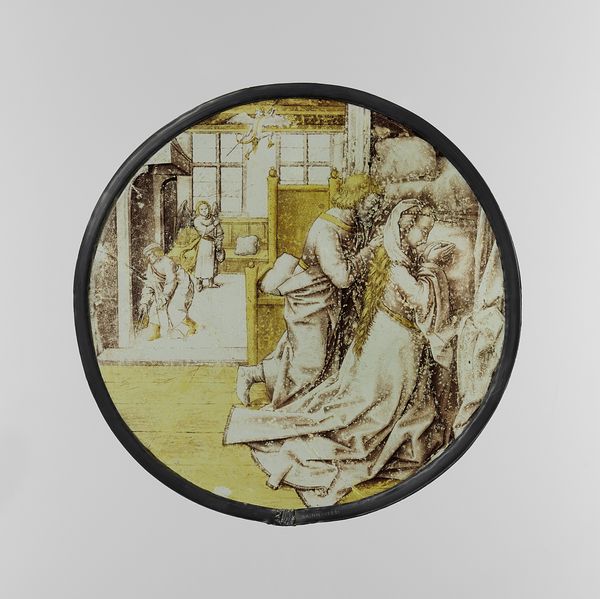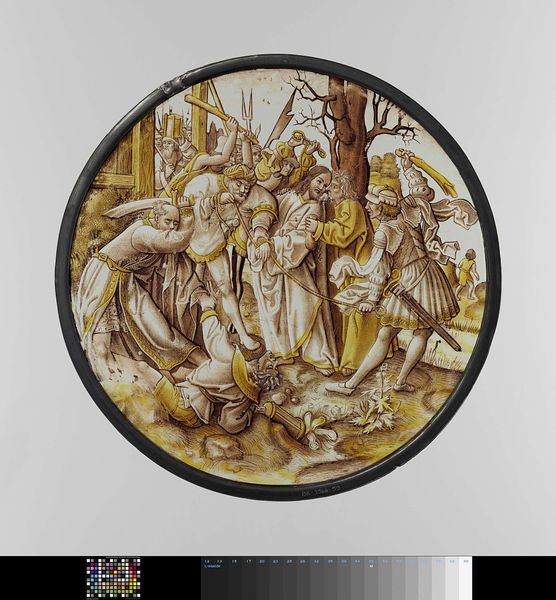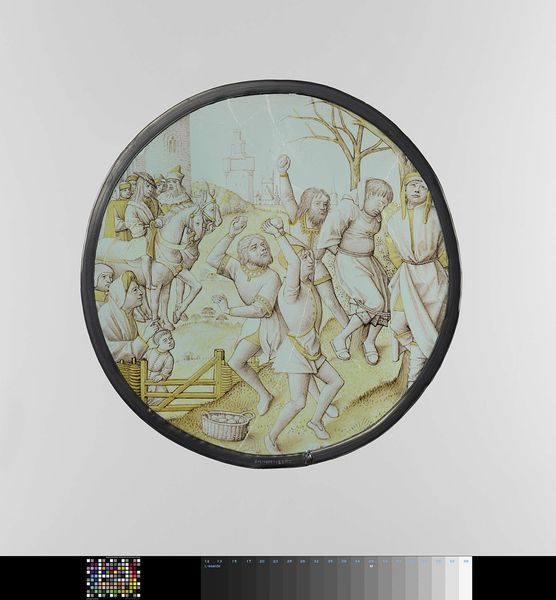
Ruit van musicerend paar met op de voorgrond twee wapens c. 1530
0:00
0:00
janswartvangroningen
Rijksmuseum
painting, glass
#
portrait
#
medieval
#
narrative-art
#
painting
#
glass
#
genre-painting
#
history-painting
#
miniature
Copyright: Rijks Museum: Open Domain
Curator: This piece, dating back to around 1530, is attributed to Jan Swart van Groningen. Titled "Ruit van musicerend paar met op de voorgrond twee wapens," it's currently held in the Rijksmuseum. The medium is glass, presenting an interesting dynamic in its making. Editor: It strikes me immediately as quite charming, though somewhat austere in its presentation. The coloring feels muted and earthy. Is that intentional or a result of the aging process of the materials, specifically the glass used? Curator: The colour palette would have been considerably more vivid when first produced. Over time chemical reactions to both light and environment would impact this piece on a molecular level, and cause what appears to our eye today as 'earth tones.' It raises questions about accessing and conserving works from marginalized communities, where historical neglect impacts our contemporary ability to even experience them as they once existed, wouldn't you agree? Editor: Absolutely, the conservation aspect reveals deeper inequalities in what materials were valued. But regarding this panel, the image shows a couple, one playing the flute, the other a lute, seated at a table with a chessboard, above two coats of arms. What does that tell us about the intended audience? Curator: Considering that we see heraldry at the fore, and musical accompaniment happening on what appears to be some sort of stage for spectators, we can infer that the glass was created as a form of announcement: a celebration of status, and a visual representation of an important dynastic bond. The role of visual arts at this moment had very little space for accessibility; rather, its exclusivity further enhanced and reinforced the subjecthood of patrons. Editor: It's intriguing to think about the artisanal labor behind a stained glass panel from the 16th century. How many steps, and different hands, would be involved? From the glassblower, the designer, to the artisan carefully applying paint—all collaborating to make this symbolic object. It really collapses the modern divide between craft and fine art. Curator: Precisely, it calls us to look beyond the artistic signature and acknowledge the array of makers that helped construct this picture, which also questions the way historical canons have been created: it's never been only the artwork alone that speaks, but a confluence of multiple actors shaping historical interpretation. Editor: Seeing this today, the muted palette encourages us to ask what remains from the original maker's intention: it highlights both the strength of collaborative artwork and the inevitable transformation due to exposure to climate, labor practices and audience interpretations through the years. Curator: Indeed. What an engaging artwork for pondering themes around labour, gender, history and representation.
Comments
No comments
Be the first to comment and join the conversation on the ultimate creative platform.
